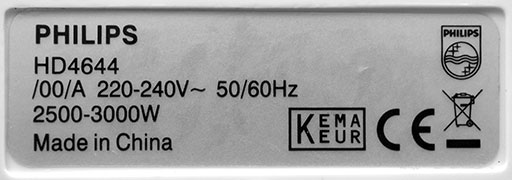3.5 Why have standards?
There are standard definitions for all the fundamental units of measurement: the metre for length; the kilogram for mass; the second for time, etc. This is the simplest form of standard; that is, a statement of 'this is how it is' (for example, how something is defined or how it is measured). A supermarket is in trouble if the 5 kg of potatoes that you bought only weighs 3 kg on the scales when you get them home (assuming, of course, that it is not your weighing equipment that is at fault).
Frequently the purpose of a standard is to ensure that everyone is talking the same language. For example, many engineering standards concern definitions of the terms used in particular fields. Problems are created when terms are misinterpreted (as with the Mars Climate Orbiter ). You want to be sure that 5 kg means the same to others as it does to you. Engineers specifying the strength required of the steel cable for a road bridge want to know they are talking the same language as the supplier of the material.
Mars Climate Orbiter
A rather embarrassing failure to standardise occurred in 1999. A planetary probe that was supposed to go into orbit around Mars steered into the planet's atmosphere and burned up instead. The reason? The team responsible for generating software to drive the motors was working in the Imperial system of units, which measures force in pounds-force, lbf. However, other teams on the project expected that the output from the software would be in Newtons. The difference between the two systems of measurement is about a factor of 4.5, and hence 10 N is equivalent to about 2.2 lbf.
You might think that a factor of nearly five is quite large: certainly you would be surprised if your supermarket shopping bill was five times more or less than what you expected. However, the calculations of precisely how much thrust is required from a motor in order to send a spacecraft into orbit around a planet are highly complicated, involving the mass of the craft, its velocity (remember this is a vector, and so includes both speed and direction) and the gravitational force being exerted on it by the planet. Small wonder that it's unlikely you would notice if the end result was out by a factor of five, though a factor of 20 or 100 might instantly appear wrong.
You can then take this argument a step further. The engineer will want to be assured that the test method used to obtain the stated value of strength is a sound, reproducible one that is accepted to give the 'right' answer. (I say 'right' using quotation marks, because for some properties there may be more than one way of obtaining a number to put against the value, but it is likely that only one of them will be the accepted standard route.) This may require any machines used in the testing procedure to be calibrated to a certain level of accuracy, which would again be specified by some form of standard.
This may sound like a horribly circular process, but in many cases careful calibration and standardisation at many levels are needed in order to convince a customer that a product meets the required specification. Potentially this can save the customer money by removing the need for testing when the product arrives from the supplier (and also removing the need for the customer to maintain and calibrate test equipment of their own). There is now a series of standards designed to ensure the quality of product passed to a customer. Indeed a 'product' does not have to be a physical object; it could be a service, a procedure or almost anything else for which standardisation might be considered desirable. We will take a look at an example of such standards later.
Standards also provide some reassurance to the customer. The power supply for the computer I am using to write this has a 'CE' mark on it, indicating that it conforms to a European standard, in this case to prevent it interfering with other electrical equipment or being unduly affected itself by equipment nearby. Many electrical appliances carry this mark (Figure 47) – in fact it is illegal for electrical equipment to be sold that does not conform to this standard. This is an example of a standard being enforced as law in order to protect the public. As you see how standards are constructed and applied in practice, you should be able to develop some answers to the question 'Why do we have standards?'

